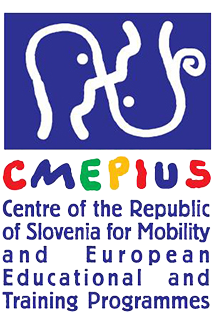Introduction to the course of Interdisciplinary Studies in Developing Cities for People!
Welcome to our Online course!
In this course, you will learn to plan and evaluate open environments and services from the perspective of different target groups. You will learn to apply key elements of urban architecture, social work, safety, and tourism to increase accessibility. When you learn to examine and understand environments and services through the eyes of different target groups, you also learn to consider their needs and those of all other users.
Here you will find the learning materials for a 5-ECTS course that was designed in the project Sustainable Accessible Future Environments (SAFE) and has been run several times.
The course is structured around a one week-long intensive study event. The course contains a three-week period of preliminary learning, a five days -long intensive event, and a three-day summarizing post-reflective period, after which the completion of the studies can be assessed by the teachers involved.
The course is an interdisciplinary, international online and blended study module, designed to understand citizen behaviour, which is crucial knowledge when it comes to making people more aware of the accessibility of services
Behaviour is what an individual or group of people is always doing in a certain environment (Goličnik and Ward-Thompson, 2010) It is also certain that people never stop behaving and that the link between the environment and their behaviour is always established. In recent years, people’s behaviour has become attractive not only for psychologists and sociologists but also for urban planners, architects, landscape architects, and all those involved in designing people’s environment (Ittelson, Rivlin and Proshansky, 1970). Various researches and related sample models can make a key contribution to the design of open public spaces, which are an extremely complex phenomenon due to the extreme increase of heterogeneity in cities. One of the approaches is Behavioural Mapping, which is an observing tool that can define or describe with quantitative parameters the behaviour of an individual or one group of people. At the same time, behavioural maps can also show the differences between the purpose for which space was designed and its actual use. Ittelson, Rivlin, and Proshansky (1970) have already developed spatial behaviour mapping. It includes manual mapping by observation and pre-prepared tables with the help of which we determine individual parameters for an individual space. With the development of technology, this type of mapping has also been upgraded with GIS systems. In GIS we can build and develop different empirical data gained from various behavioural maps. Its database offers a transparent examination of places through different combinations of behaviour pattern attributes e.g. the type of activity, gender, age, etc. (Goličnik Marušić, 2011).
Learning diary
During the whole course, you are asked to keep a learning diary whose purpose is to reflect on the materials you study, the tasks you carry out, and what you learn alone and together with the other students during the preliminary learning period, the intensive event and post-reflective period. The learning diary is not a report; it is a visual and reflective journal with no page limits (but remember less is more) where you can write, draw, speak, and even make videos if you like. You start your learning diary now when you start the preliminary learning period and make entries during the whole course. At the end, you will submit the diary to your teacher or you will receive another instruction to get a grade.
You may download a template for your learning diary here
Please explore the material carefully and enjoy your journey to improve the accessibility of services and environments. You can pick the most interesting topics from this course. However, we recommend that you study the entire package. In this way, you have trained comprehensively as a designer of accessible environments and services.
Join yourself into the world of good and accessible experiences!
References:
Goličnik, B., Ward Thompson, C. (2010). Emerging relationships between design and use of urban park spaces. Landscape and Urban Planning, vol. 94, no. 1, (January 2010), pp. 38–53, ISSN 0169-2046
Goličnik Marušić, B. (2011). Analysis of patterns of spatial occupancy in urban open space using behaviour maps and GIS. Urban design International, vol. 16, no. 1, (Spring, 2011), pp. 36-50, ISSN 1357-5317
Ittelson, W.H., Rivlin, L.G., Prohansky, H.M. (1970). The Use of Behavioural Maps in Environmental Psychology, In Environmental Psychology: Man and his Physical Setting Prohansky, H.M., Ittelson, W.H. & Rivlin, L.G. (Eds.), pp. (658-668). Holt, Rinehart & Winston, New York.


